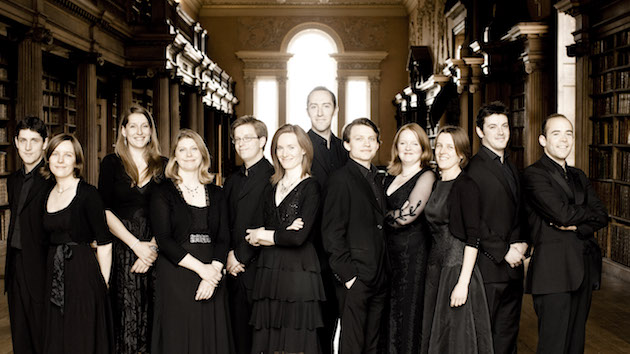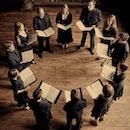
The British early music vocal ensemble Stile Antico has finally made its Bay Area debut, a decade after its founding and preceded by a substantial catalog of recordings and many critical accolades. By and large, the group lived up to its reputation, presenting an imaginative program that garnered a cheering standing ovation. That the First Congregational Church was not sold out might well be because the concert was announced only in March, after having been previously scheduled and subsequently cancelled in 2015.
Stile Antico functions more like a string quartet than it does like a typical chorus. It has no conductor and works collaboratively. During Sunday's program, each singer was visibly alert to each of the others. Together, they handled frequent, complex metrical transitions with aplomb, though toward the end of the program, the group’s forward momentum did flag occasionally. Dynamics and phrasing might have been handled more subtly had there been a conductor, but the results were nonetheless extremely impressive. Where some ensembles strive for a pure and almost disembodied sound, Stile Antico's sound is earthy, robust, and very exciting.
Western composers have long incorporated pre-existing music into their compositions, from plainchants used as the basis of a Mass or motet to the numerous composers who seized on Paganini's 24th Caprice for solo violin and created new sets of variations from it. Stile Antico’s program, called “Sacred or Profane? The Sensual Made Spiritual in the Renaissance,” paired secular works with Mass movements and, in one case, a motet based on them. These were interspersed with a set of Monteverdi madrigals, for which a poet had written sacred texts to make the madrigals acceptable for church performances as motets.
The composers on the program used one of two compositional techniques to write their Mass movements. Either the melody of the secular work was sung on its own, typically in one voice, as the cantus firmus around which the Mass movement was constructed, or the entire work was incorporated freely, using the parody technique.
Stile Antico opened the program by marching from the rear of the church singing the 15th-century song “L'homme armé” (The armed man), a famous melody that’s the cantus firmus for more than 40 Renaissance Mass settings as well as works by a number of 20th- and 21st-century composers. The singers paired it with the Kyrie from Guillaume Dufay’s Missa L'homme armé. The melody “Westron Wynde” and the Sanctus and Benedictus from John Taverner's Western Wynde Mass opened the second half of the program.
The spirit of the secular works animated the Mass movements throughout the concert. The lively and suggestive tone of Clemens non Papa’s “Entre vous filles de quinze ans” (You 15-year-old girls) becomes the cheerful Gloria of Lassus’ Mass based on the part song. Clément Janequin's long and remarkable, sound effect-filled madrigal “La guerre” (The war) becomes the militaristic Credo of Tomás Luis de Victoria’s Mass.
The listener has to wonder just what Aquilino Coppini had in mind when he wrote the sacred texts for the four Monteverdi works on the program. Did he think he had cleansed the madrigals of their secular, indeed erotic, content? If so, he was wrong, or perhaps he felt that worshipping God and Jesus has an erotic side, because the motets certainly retained a good deal of their spiciness, and not only musically. His text “Qui laudes tuas cantat” (He who sings your praise) features a soul that “burns with your blazing love in heaven,” and the narrator of “O Jesu mea vita” (O Jesus, my life) says “O Jesus, my light, my hope, my heart, I give myself to you.”
All in all, this was a most satisfying survey of a fascinating area of the repertory. I was left wanting to hear even more, and of course it would be possible to put together several related programs, either of excerpts or full Masses based on secular source material.

